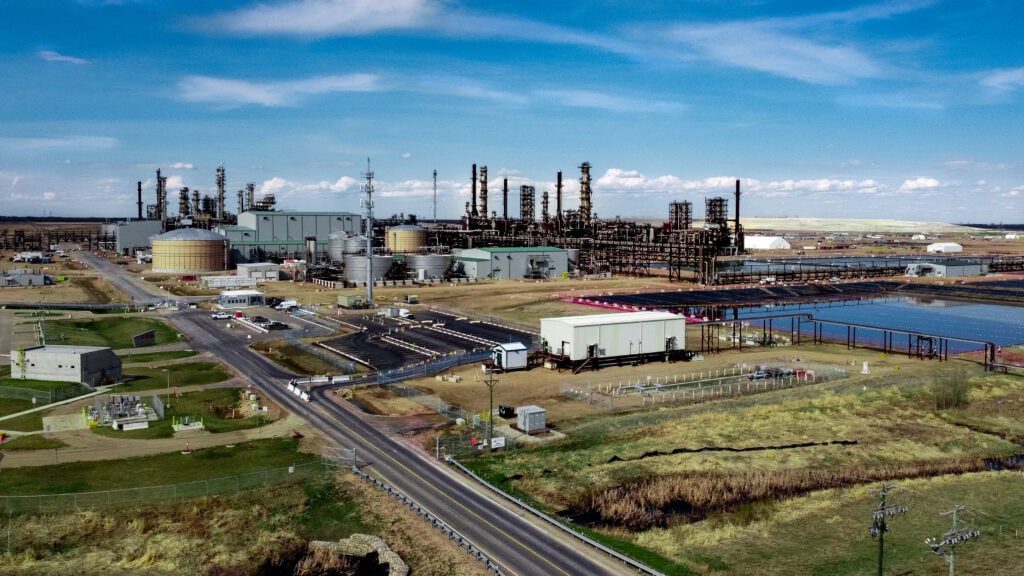Alberta has a big emissions problem and an economy heavily dependent on the industry at the heart of those emissions.
Billions of public dollars are being earmarked for carbon capture, utilization and storage projects in both provinces as they grapple with federal climate targets, investor flight from fossil fuels and a changing world.
Organizations like the International Energy Agency say demand for oil and gas will fall if governments are serious about achieving net-zero emissions, and Canada’s own net-zero ambitions would appear to contradict buoying the oil and gas sector.
Critics of carbon capture technology see investments like those in the Prairies and argue it’s simply a way to prolong the lifespan of an industry that needs to put itself out of business if the world is to survive.
open letter to Finance Minister and Deputy Prime Minister Chrystia Freeland, a group of over 400 academics cautioned against issuing a tax credit for new carbon capture projects, which they argue amount to a subsidy for fossil fuels, for an expensive technology that has a poor track record of hitting targets.
“We believe the path forward to address the climate challenge is not punishing people for living normal lives, but rather investing in technology that can make a huge difference,” he said in a November 2021 announcement of over $100 million in funding for emissions-reduction projects.
Captured carbon can also be used for what’s called enhanced oil recovery, where the carbon is injected into old wells in order to increase pressure and force more oil or gas to the surface.
It just so happens that right now, the oil and gas industry is not only the driver of the need for the technology, but also one of its biggest proponents.
There are only two large-scale carbon capture, utilization and storage projects currently operating in Alberta, both of which received significant public funding — Shell Canada’s Quest project and the Alberta Carbon Trunk Line.
The Trunk Line, on the other hand, hauls captured carbon from a fertilizer plant and a refinery and pipes it 240 kilometres south to old oil reservoirs.
In Saskatchewan, the best-known carbon capture project is the Boundary Dam coal-fired power plant, operational since 2014 and the first coal power plant with the technology.
The list of proposals is long.
Also on the horizon in Alberta is the increased use of carbon capture to create cleaner hydrogen, including a major project by Air Products — a U.S.-based company which primarily sells gases and chemicals for industrial use.
Currently, the Alberta government is accepting proposals for companies or consortiums to acquire rights to what’s known as pore space — areas deep underground where carbon can be stored — as part of a plan for storage hubs throughout the province.
In Saskatchewan, Cenovus Energy is mulling a new carbon capture project at its upgrader in Lloydminster, and Whitecap Resources and Federated Co-operatives Ltd.
Department of Energy estimates Saskatchewan and Alberta are home to approximately nine per cent of the total onshore storage capacity in North America, with a wide estimate of between 190 and 640 gigatonnes of capacity.
Some costs could come down for future projects as carbon capture technology is refined, but other costs, including sourcing good storage areas, could become more expensive, according to Severson-Baker.
He said the average cost of a big project in Canada is currently $1 billion for a megatonne per year of reductions.
Quest, for example, cost $1.3 billion, with $120 million from Ottawa and $745 million from Alberta.
Overall, it’s clear that for the majority of projects there are significant public dollars flowing.
Alberta is intent on funding carbon capture and storage and is also using money from its version of the carbon tax to support these sorts of projects — it has allocated $100 million specifically for carbon capture, utilization and storage projects.
Alberta produced 276 megatonnes of total emissions in 2019, the highest, by far, in the country.
That figure only relates to what are known as “gross carbon reductions” — meaning it doesn’t factor in the carbon the project releases.
In reality, when the carbon it releases is taken into account, Quest eliminates between 736,000 tonnes and 897,000 tonnes each year in net reductions, according to Alberta Energy’s own yearly report on the project.
That said, Boundary Dam, which sells the majority of its carbon for extraction purposes, has captured just over four megatonnes of carbon since coming online in 2014.
The federal government says it wants to help eliminate 15 megatonnes per year through its carbon capture, utilization and storage tax credit.
Beyond provincial and federal funding, there are plans and policies in place that governments hope will drive the sector.
The federal government is also crafting a national strategy for the support of carbon capture, utilization and storage and to drive innovations in the technology.
While the capacity for pore space in Saskatchewan and Alberta is vast, Severson-Baker said it’s not infinite, and there might have to be more focus on priorities other than carbon emitted from oil and gas extraction.
Governments are busy crafting plans and incentives and companies, for the most part, are watching to see what happens.
We hired seven new staff over the past year and won a boatload of awards for our features, our photography and our investigative reporting.
